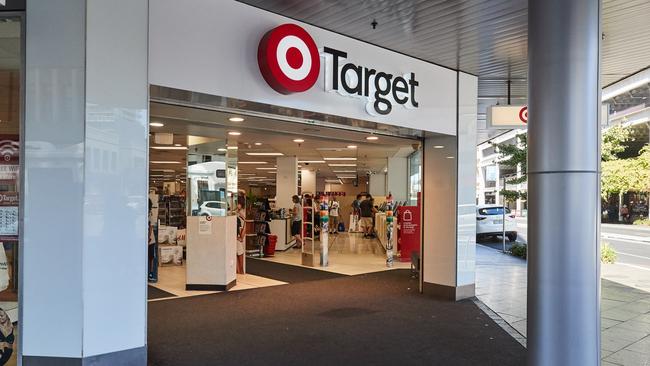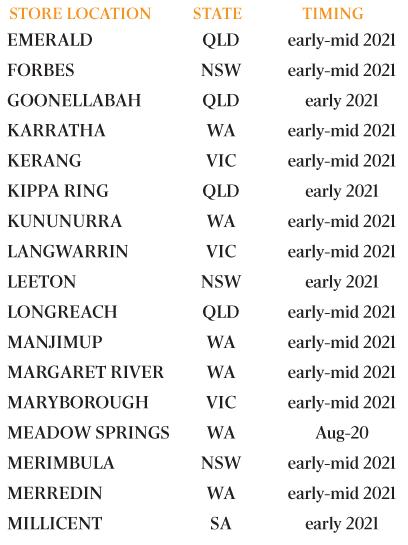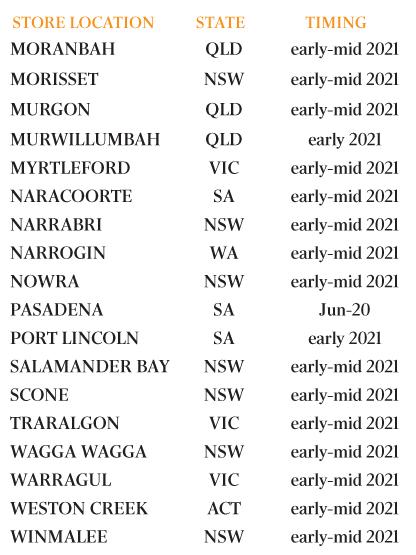Regional stores on Target hit list
These are the stores slated for closure with the axe to fall heaviest in regional areas.

The beleaguered mall industry has taken another blow as Wesfarmers slashes its Target network, on Friday revealing that about half its 284-store network would be shut down or turned into Kmart stores, with the heaviest toll in country areas.
Targets will be closed down from as early as June but mainly over the next year. The marked stores are scattered across the nation, mostly in regional locations across NSW, Queensland and Victoria, but also some city locations such as Sydney’s Campbelltown.
Stores in high-profile towns and areas, including the Margaret River, Nowra, Port Lincoln, Scone, Traralgon, Wagga Wagga and Warragul will be closed.
Targets that will be converted to Kmarts tend to be in slightly larger towns that have more favourable demographics and less competition. Stores in Murray Bridge in SA and Noosa Junction in Queensland, Bega in NSW and Ararat in Victoria are earmarked for the switch with most works to start next year.

The shift had been long-awaited by mall owners as it finally put some underperforming spaces out of their misery. But the timing comes at a low point for shopping centres, as they seek to recover from the coronavirus pandemic.
The industry is facing a pitched battle between landlords, who are caught in a vortex of falling values, and retailers who either can’t or won’t pay rents, with the Morrison government’s leasing code for smaller tenants proving little help so far for the most hard-pressed.
Just like the Target discount department store, many landlords have fallen into the business trap of being caught in the middle, with their operations neither top ranking regional malls or smaller, more nimble convenience-driven offers.
The COVID-19 crisis could see the worst-off have to undertake radical courses, including putting offices and other facilities into areas left vacant as Target and other pressured retailers depart.

All up, Wesfarmers will convert suitable Target and Target Country stores to Kmarts but close 10 to 25 large format Target stores and 50 small-format Target Country stores. Up to 40 large format Targets would become Kmarts and 52 Target Country stores would transform into small-format Kmart stores.
Kmart managing director Ian Bailey said Wesfarmers had been talking to landlords and the conversations “vary considerably”. “I think a lot of them are approaching this very positively,” he said.
Wesfarmers said each store had its own nuances, based on demographics, competitors and proximity to other stores and it was making “commercial decisions” about conversions.
About 23 per cent of malls owned by real estate investment trusts have both a Kmart and a Target, and Wesfamers indicated that it was not aiming to keep both operating in the same centres.
The REITS are mainly exposed to regional malls, which typically carry both a large format Target and Kmart, and Macquarie analysts said it would be an “unlikely strategy” for landlords to have two Kmarts in a mall, which would limit the extent of conversions available for Target.

Macquarie said closures and conversions were a “reasonable outcome” for landlords.
“Target is a relatively low weighted average lease expiry and underperforming tenant. The focus for landlords will be the extent of backfill opportunities at the store closures,” the analyst said.
Department stores and discount cousins take up a large proportion of mall space but have a limited impact on income.
Target makes up less than 2 per cent of income for listed REITs so the impact is minimal, even assuming all stores were closed.
Scentre said it had 33 Target stores and 28 Kmart stores across its Westfield portfolio and they were among Wesfarmers’ most productive.
Vicinity Centres has 20 Target stores in its owned portfolio, equivalent to 2 per cent of turnover, and it had two Target stores in its managed portfolio. Most of are in high-traffic locations.



